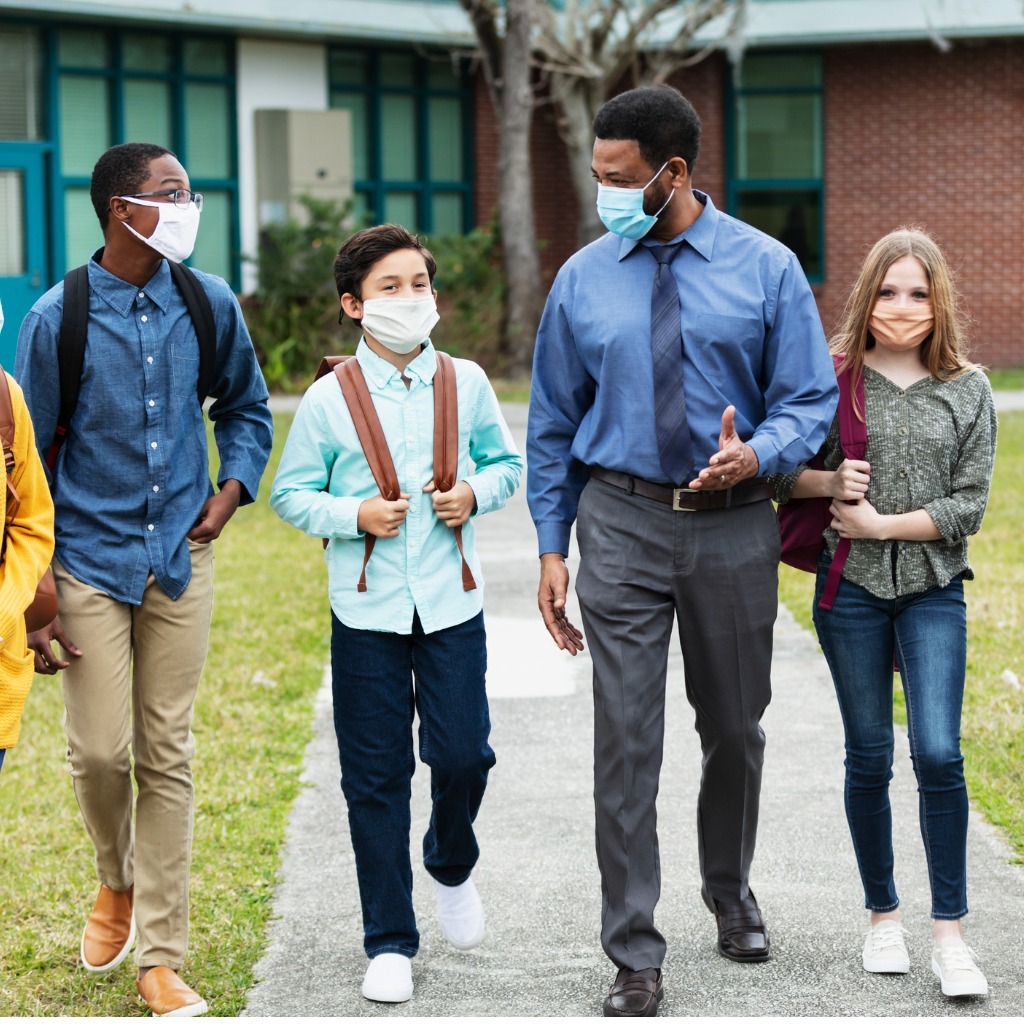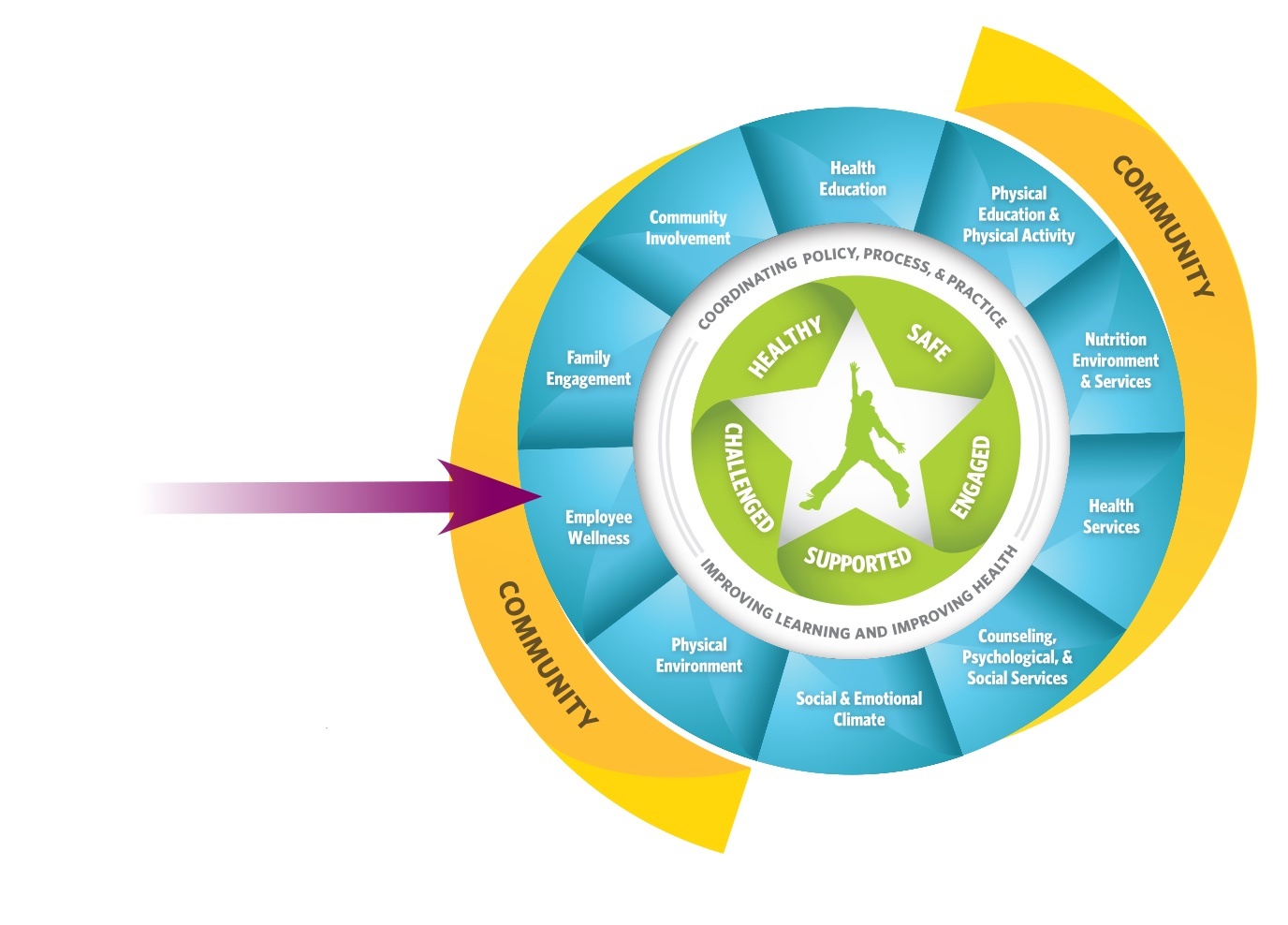
A Toolkit for Supporting the Implementation of School Employee Wellness in Districts/ Schools
About Toolkit

The COVID-19 pandemic ignited an ongoing problem within the U.S. educational system, which has included a declining labor force, increased stress and anxiety among school staff, and low morale among employees within K-12 public school settings. As a result, school districts are struggling to attract and retain employees, and many employees have health concerns that impact their work life. An evidence based employee wellness initiative can improve employee health, increase productivity and performance, reduce absences, increase employee retention, reduce turnover, enhance recruitment of prospective employees, lower health care costs, and benefit students.
This quick-start toolkit is provided as a supplement to Healthy School, Healthy Staff, Healthy Students: A Guide to Improving School Employee Wellness, designed to increase the capacity of district and school staff in addressing school employee wellness, to improve the health of all school employees, and to improve student health and academic outcomes.
The toolkit comprises the following fact sheets:
Why It Was Developed

The Society for Public Health Education aims to increase the capacity of districts and school staff to implement school employee wellness policies and programs to address health equity, emotional well-being, and risk factors that contribute to chronic disease. School employee wellness is an essential component of the Whole School, Whole Community, Whole Child (WSCC) model and is a critical contributor to students’ health and academic success. Addressing the physical, mental, social, emotional, and professional health of all school employees (e.g., teachers, administrators, classified staff) can improve workforce retention, reduce stress, reduce absenteeism, and boost job satisfaction.
Employee wellness can be extremely valuable in underserved school districts, where opportunities for promoting healthy behaviors (e.g., safe, accessible bike and walking paths; access to healthy foods) for students and employees are often limited and health disparities are prevalent.1
The Centers for Disease Control and Prevention (CDC) defines employee wellness as “a coordinated set of programs, policies, benefits, and environmental supports designed to address multiple risk factors and health conditions to meet the health and safety needs of all employees.”2 A school employee wellness initiative can also address health equity, defined by the CDC as “when every person has the opportunity to attain his or her full health potential and no one is disadvantaged from achieving this potential because of social position or other socially determined circumstances.”3 (Learn more about health equity at Health Equity | CDC)
To download the full book of fact sheets, please click here.
References
1 UCLA Center to Eliminate Health Disparities and Samuels & Associates, Failing Fitness: Physical Activity and Physical Education in Schools (Los Angeles, CA: The California Endowment, January 2007).
2 “Workplace Health Model,” Workplace Health Promotion, Centers for Disease Control and Prevention, May 13, 2016, https://www.cdc.gov/workplacehealthpromotion/model/index.html
3 “What Is Health Equity?,” Health Equity, Centers for Disease Control and Prevention, July 1, 2022, https://www.cdc.gov/healthequi...
Acknowledgements
This toolkit was developed with guidance from a 14-member School Employee Wellness (SEW) Advisory Committee (listed below), as well as with formative research conducted by consultants at Wayne State University with school employees and stakeholders from across the country. The Society for Public Health Education would like to thank the following individuals who provided valuable input for this toolkit.
| Joy Anne Osterhout*** Health & Education Communication Consultants | Sara Bowie*** Health & Education Communication Consultants | Sheena Tallis-Tallman*** Equity Writing Consultant |
| Rachael Dombrowski** California State University San Marcos | James Mallare** Wayne State University | Chelsey Hughes Society for Public Health Education |
| Clarissa Montes Society for Public Health Education | Jyotsna Blackwell Centers for Disease Control and Prevention | Melissa Fahrenbruch Centers for Disease Control and Prevention |
| Holly Hunt Centers for Disease Control and Prevention | Adrian Talley* Indian Prairie School District 204 in Illinois | Shauvon Simmons-Wright* Alliance for a Healthier Generation |
| Christine Rockwood* Tennessee Department of Education | Laura F. DeStigter* National Association of Chronic Disease Directors (NACDD) | Mara Galic* National Association of Chronic Disease Directors (NACDD) |
| Dawn Forkner* District Wellness Coordinator | Megan Blanco* National Association of School Boards of Education (NASBE) | Duncan Van Dusen* Coordinated Approach to Child Health (CATCH) |
| Kayla Jackson* The School Superintendents Association (AASA) | Jeanie Alter* American School Health Association (ASHA) | Brandon Stratford* Child Trends |
| Nichole Bobo* National Association of School Nurses (NASN) | Mariah S. Lafleur* Kaiser Permanente Thriving Schools | Inge Aldersebaes* OEA Choice Trust |
***Denotes writing consultants
**Denotes research consultants
*Denotes members of SEW Advisory Committee
| Access Date | Quiz Result | Score | Actions |
|---|
Registrant Login
Have you logged in?
Remember to log in to access this free tool!
